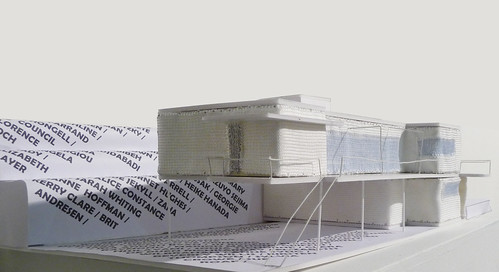Exhibited at Loop – a celebration of the 100th anniversary of International Women’s Day
The recognition of 100 significant female architects.
How many [female] architects can you name?
E-1027 is a modernist house that sits on the edge of the sea in Roquebrune Cap-Martin, France; completed in 1929, up until recently its design was attributed to Jean Badovici, a contemporary and friend of Le Corbusier. In actual fact the house was predominantly the work of Eileen Gray, his partner at the time. Gray was generally more renown for her furniture design, less known for her contribution to architecture. This is not an isolated incident – female architects often struggle for recognition and commissions within the industry.
Architecture as a profession has been around for centuries however women have only been allowed to practice architecture for less than a century. Following the passing of the 1919 Sex Discrimination Act women were first allowed to become architects. Prior to that women had found it necessary to practice in secret, as was the case with Elizabeth Wilbraham (1632-1705) who may have designed many notable buildings in the seventeenth century but without the records to establish proper attribution for her designs, her name lies in obscurity. Even the Bauhaus design school which was reputed for it’s forward thinking and embracing of modern ideas still would not admit women into it’s architecture school when opened in 1927. The school had defined roles for the “beautiful sex” most female students restricted to the textile crafts, few permitted into sculpture or other areas deemed for the “stronger sex”.
Women are now able to make a name for themselves in architecture these days, and the recognition of their contribution increasing with high profile names such as Zaha Hadid and Kazuyo Sejima of SANAA. However inequalities do exist in the architectural profession today, and it is still regarded as a male dominated profession, with very few women reaching high managerial roles, the glass ceiling within the profession is still a serious concern. Studies have shown the number of women that stay in architecture are relatively low. Women make up 38% of the architectural student population however only 13% of the practicing profession. The long hours and family commitments, and general pressures of a “macho” industry are considered to be reasons for the lack of progression of women architects. This work acknowledges the numerous women and their contribution to the built environment, not satisfied in just taking up the traditional crafts.

